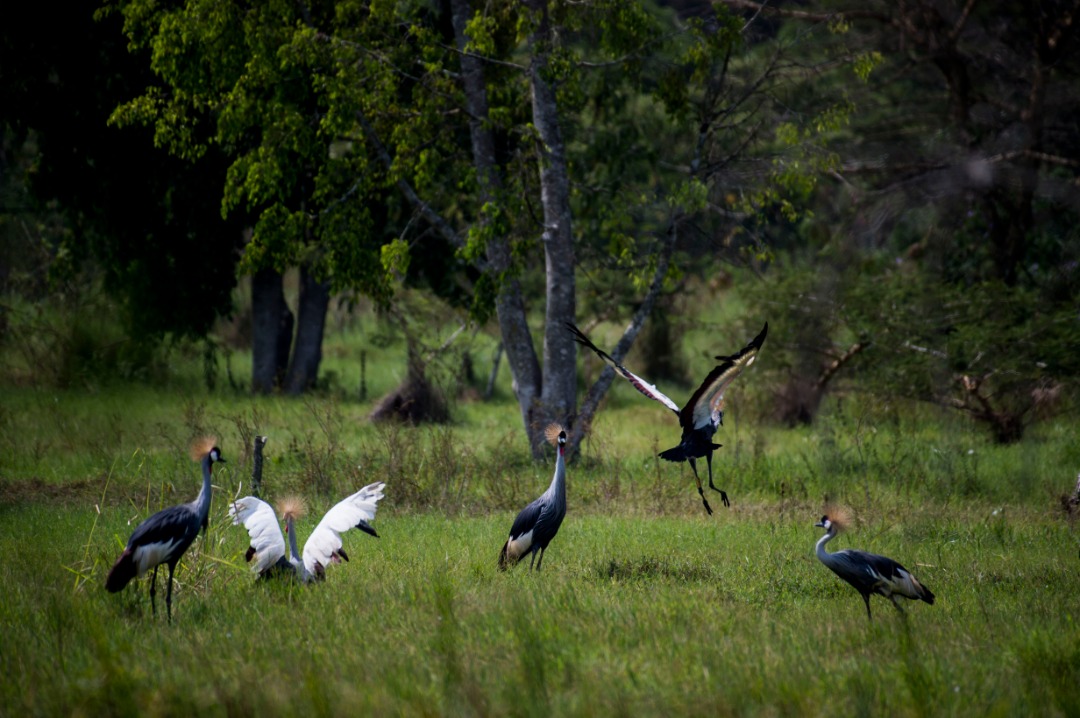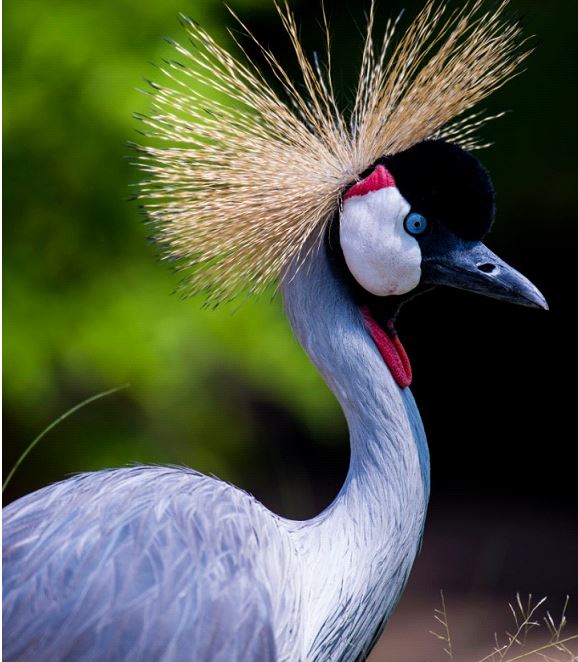
The Grey Crested Cranes at Umsambi sanctuary at Bambino recreational centre-Gasabo district
The Grey Crowned Cranes were a totemic symbol in Rwandan culture. The birds were adapted, respected, and believed to be an emblem of some of the biggest clans with significant means of peace and longevity.
But the domesticating of these rare birds increased their extinction threat.
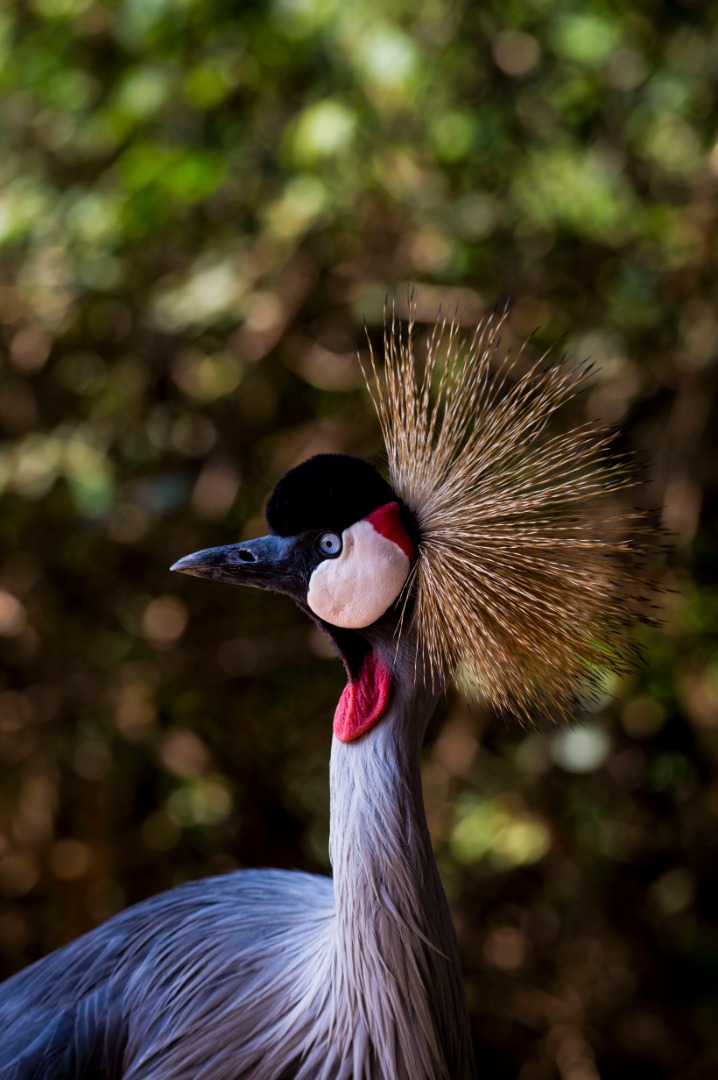
For the Grey Crowned crane to remain ‘captive’ at home, people would have their wings cut or broken to prevent them from flying back to their natural habitat. In captivity, they could not breed and for that reason, others died prematurely.
“The grey crowned cranes were highly respected in ‘Banyiginya’ one of the biggest clans in Rwanda. It is the identification of Banyiginya people and their totem. Killing a grey crowned crane was an abomination in the clan, people always felt proud with it,” Rtd Lieutenant Col. Gerald Nyirimanzi, a historian said.
“It was considered to be a ‘noble’ bird in Banyiginya clan.”
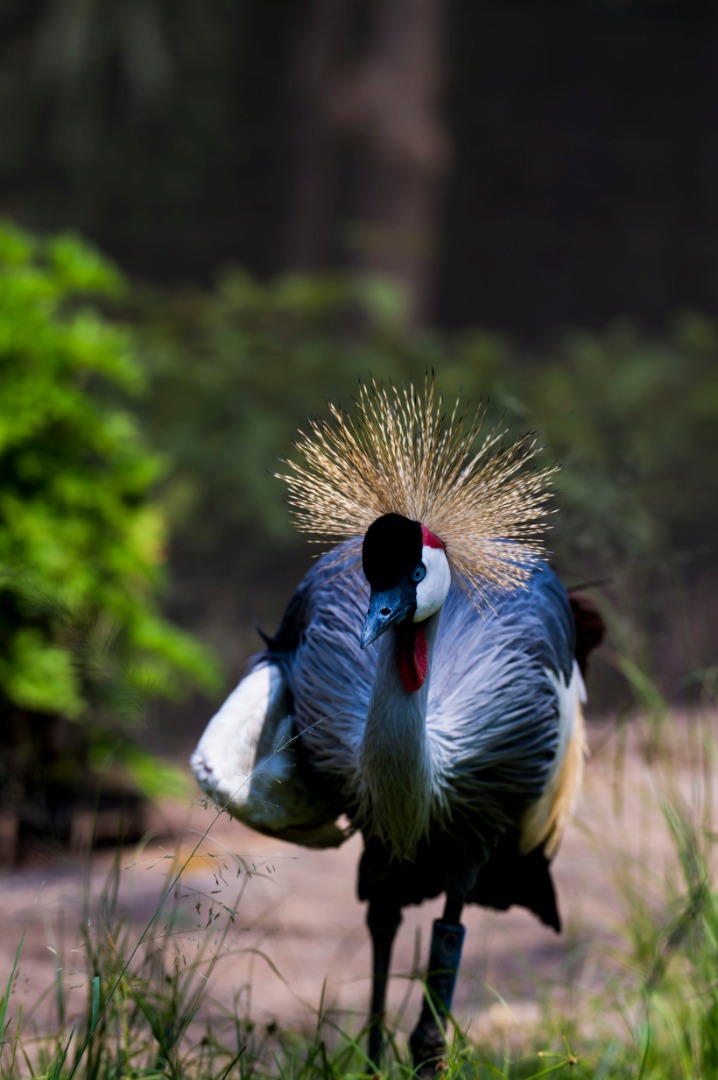
However, keeping these rare birds in captivity stopped them from multiplying with the most number of them dying without breeding.
The alarming decline of grey crowned cranes in the country attracted the attention of the conservationists who conducted a campaign to conserve them since 2014.
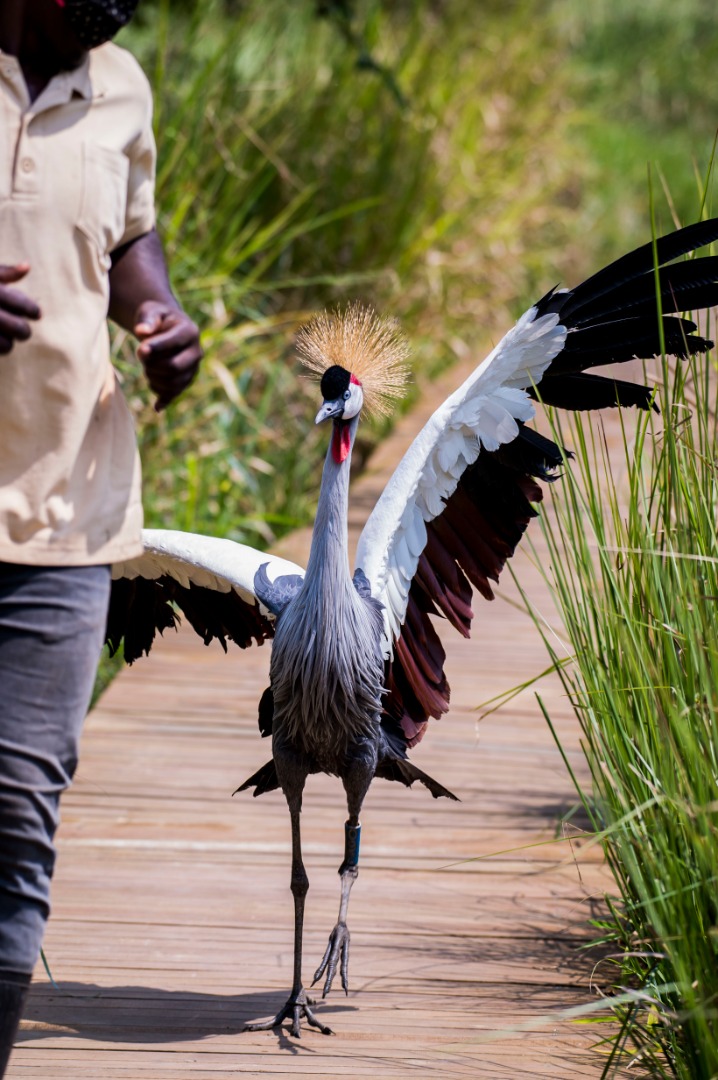
At that time, the Rwanda Wildlife Conservation Association (RWCA) was started with the aim of rescuing Grey Crowned Cranes and to expand a conservation project that would benefit several other threatened connected to other endangered or threatened species.
Right away, a census left a discovery that 318 grey crowned cranes were identified in captivity and ever since, 241 have been rescued.
Among the rescued grey crowned 167 have been rehabilitated and reintegrated into their natural habitat in Akagera national park, Eastern province.
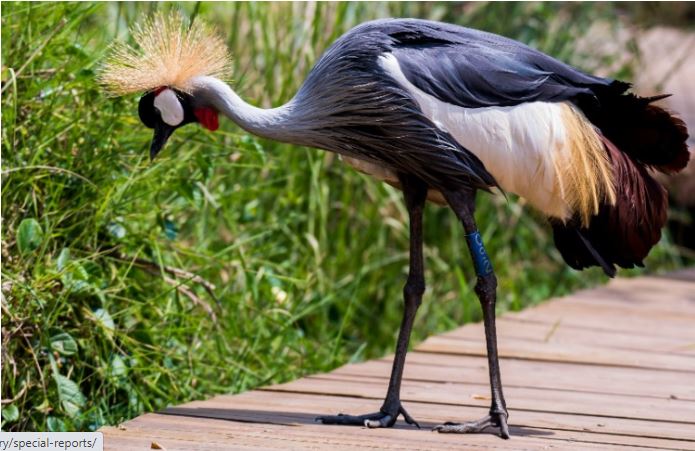
Seventy four of the rescued “nobel birds” were crippled and disabled to be returned to their natural habitat and are permanently adapted by Umusambi, a bird’s sanctuary in Kigali city.
“ We are thankful that the community accepted to hand them over because of their extinction threat,” Olivier Nsengimana, founder of Rwanda Wildlife Conservation Association (RWCA) said.
“Some of them were crippled to the extent that we cannot release them to their natural habitat, their feathers or legs were broken. They cannot be integrated in the habitat because they can die,”
“The best we can do for disabled grey crowned birds is to feed, treat and help them to breed and multiply. They are tested and treated from various diseases at Art Museum Kanombe.”
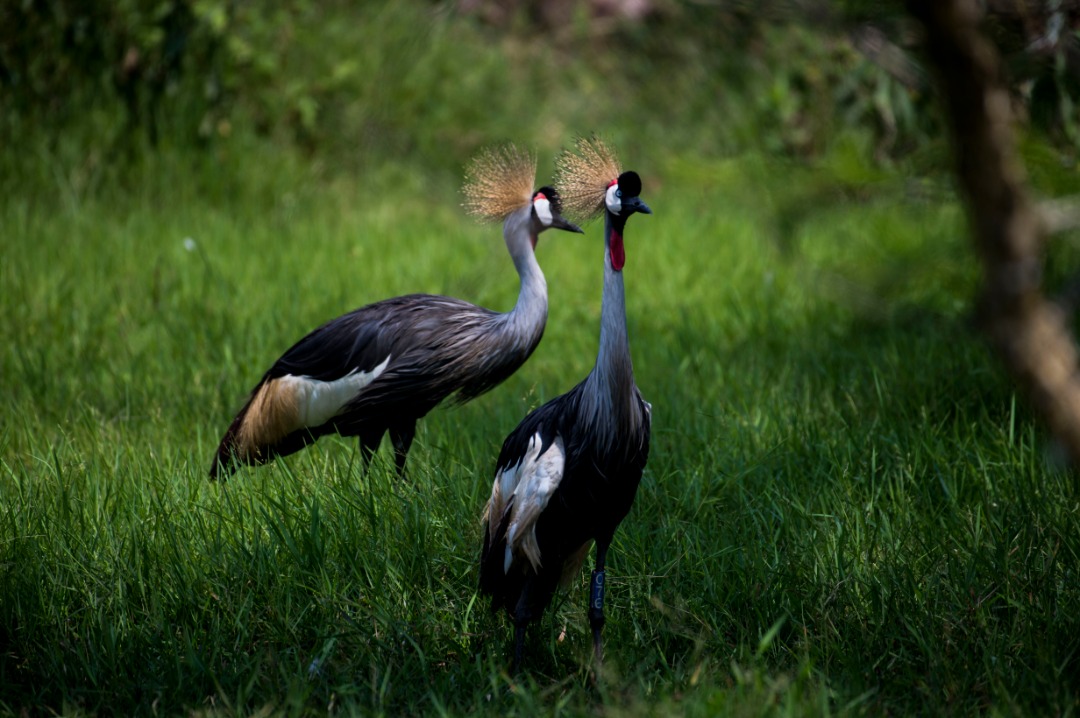 The data of the latest annual national crane census last year by RWCA shows that the number of these noble birds have increased to 748 from 487 in 2018.
The data of the latest annual national crane census last year by RWCA shows that the number of these noble birds have increased to 748 from 487 in 2018.
“ Initially, communities hunted grey crowned cranes and sold them to people in Kigali, Rubavu, and Musanze cities who kept them in homes and hotels,” Nsengimana said.
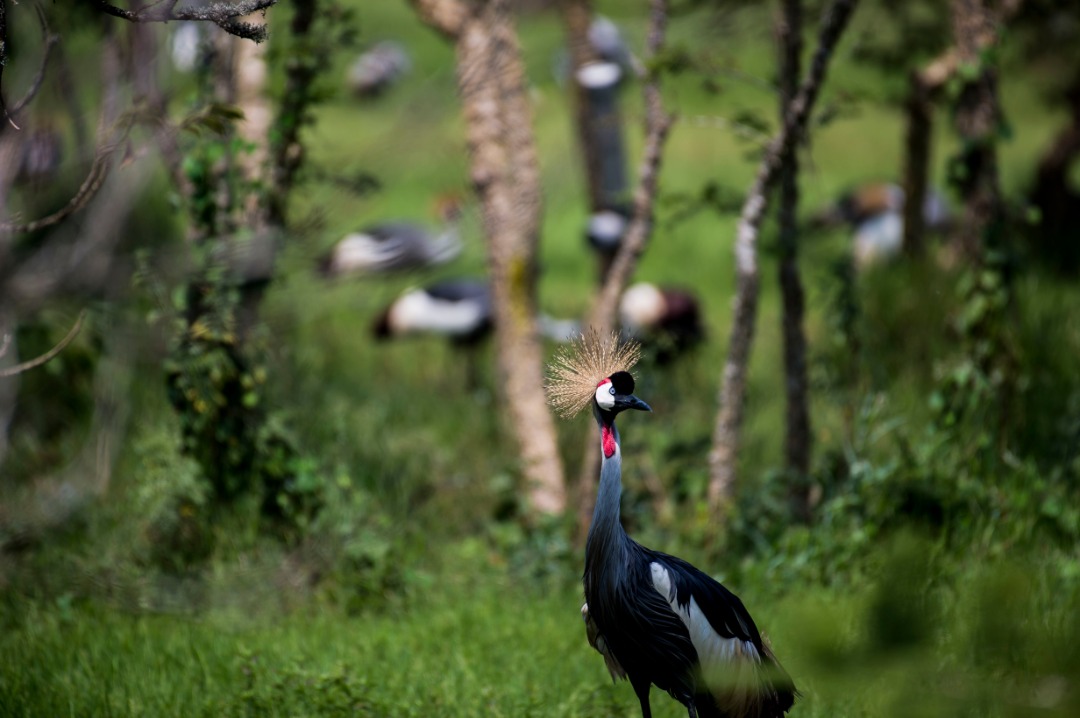
Nsengimana’s organisation uses GPS to track the grey crowned cranes that were released in the Akagera national park.
“They are doing well,” he said.
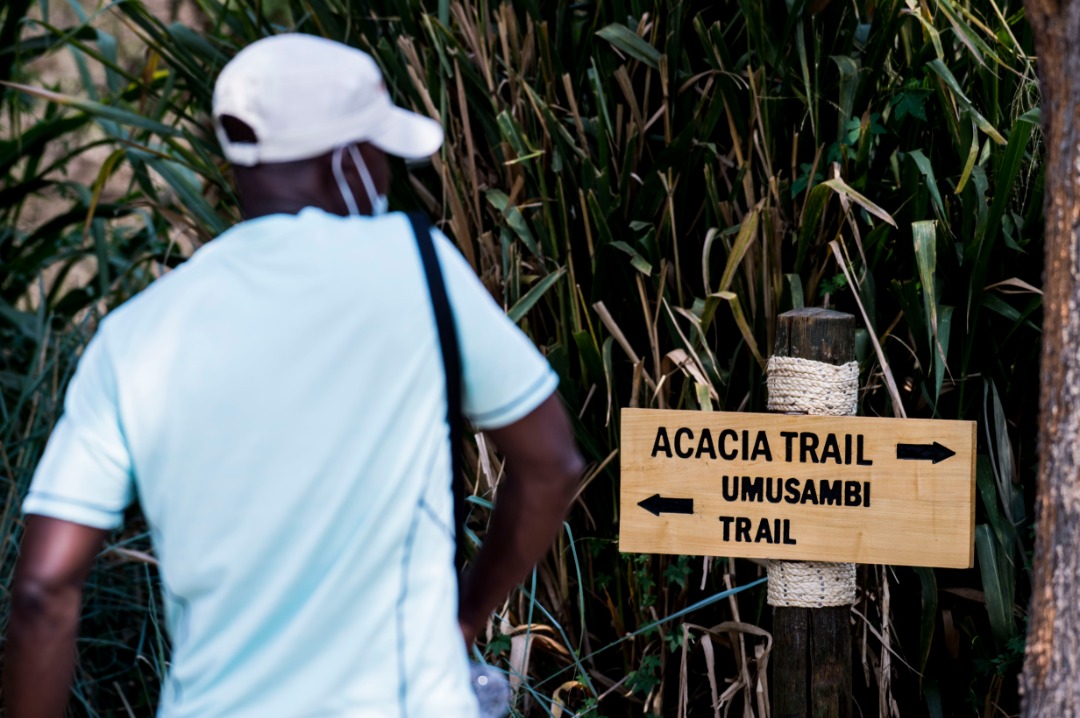
Before integrating the birds in Akagera park, they are rescued and taken to Kanombe Art Museum for health checkup and then to a birds sanctuary for selection of those that are fit for reinsertion into the natural habitat.
